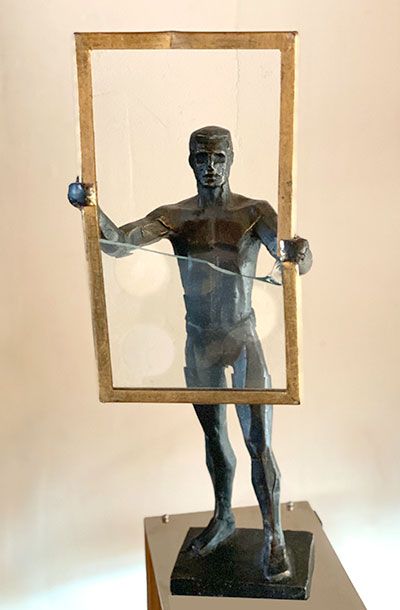Unconscious Bias: Our Filter Bubbles Shape Our Worldview

Filter bubble is a new term for the
internet age. It was coined by internet activist Eli Pariser to
describe a state of intellectual isolation that can result from internet
searches that are personalized for you based on, for example, a Google
algorithm that guesses what you’d like to see. It makes that guess by
tracking what you’ve clicked on in the past so it shows you more of the
same.
The result of this filter bubble is that more and more, you see the
articles and information you’re used to, that you’re comfortable with.
Very quickly, your search results will no longer include information you
haven’t chosen to look at and the result is that you won’t even have
the opportunity to read or be exposed to information that disagrees with
your viewpoint. This all serves to further isolate you.
Sound familiar?
This is exactly how our unconscious filters, our implicit biases
work. Just like a Google algorithm that shows us web pages based on our
previous clicks, our unconscious biases show us our pre-conceived,
pre-loaded assumptions about the people and situations we encounter. Our
internal filter bubbles shape our thoughts and behavior in significant
ways. And here’s the dangerous thing – most of the time we don’t even
consider that we’re being shaped by them.
So, here’s a question: When’s the last time you looked into your
Google search settings to understand why the algorithm shows you why it
presents the information it does? If you’re like me, the answer is
never.
When it comes to our unconscious search algorithms, however, it’s
critical that we explore them and make sure they continue to serve us.
Why do we think, speak and behave the way we do when we meet and
interact with people? Our unconscious search algorithms play a big role
in our choices every minute of every day. In a team meeting. In an
interaction that went south…. On and on.
Which leads to the photo above this blog. My wife gave me this brass
statue as a birthday gift a few years ago. It immediately spoke to me
and I look at it everyday. The photo may not show clearly, but the man
is holding a frame with a glass plate. He looks out through this glass
at the world, and the glass has distortions in it which, of course,
distort his view of the world.
What a metaphor! This statue helps remind me that I am looking out at
the world through filters that have been installed into me. Filters
that lead me to not only notice differences of race, gender, age, body
size, and so many more, but to make immediate associations based on
those differences.
In my work with organizations, via Unconscious Bias Workshops via Zoom (link)
or our eLearning courses, I use this definition to start the
conversation: An unconscious bias is an automatic assumption or belief
about a person or a group of people based on one’s internal filters and
judgments. These beliefs run beneath our conscious thoughts – they’re in
our blind spot – where they can (and do) influence what we say and what
we do.
Much like the algorithm that’s showing you select information based
on your preferences, your inner filters are bringing up automatic
associations about people and situations that you learned throughout
your life: from your family, your education, movies and TV shows, social
media and all the billions of other inputs you’ve received. They’re all
stored. Your filters are in place.
Back to the statue. One day, I was in a rush to pick up a pile of
papers and I knocked it off the shelf. It fell hard, denting the frame
and fracturing the glass plate. I was devastated. My first thought was
to replace the glass.
But then I thought about it some more and went back to the metaphor.
I’m sure you’re way ahead of me here. Through this accident, the statue
man got a perspective on his filters. The glass was shattered and he can
see clearly without a filter. He can be more aware of the frame he’s
looking through.
Unlike the statue man, we can never be free of our filters, of our unconscious biases. If we have brains, we have biases. But, the good news is that our internal search filters can be refreshed with new information. You can be at choice whether your old assumptions about people, associations you make about people, still work for you. This is part of becoming more conscious, more mindful of your biases. So that the automatic association machine won’t isolate you and trigger you to say and do things that are hurtful to colleagues and others.
So, in the end, I decided to leave statue man with the broken glass
plate, as a symbol of the ongoing work we all have to engage in. After
all, diversity, equity and inclusion is not a destination, it’s a
constantly evolving journey.

